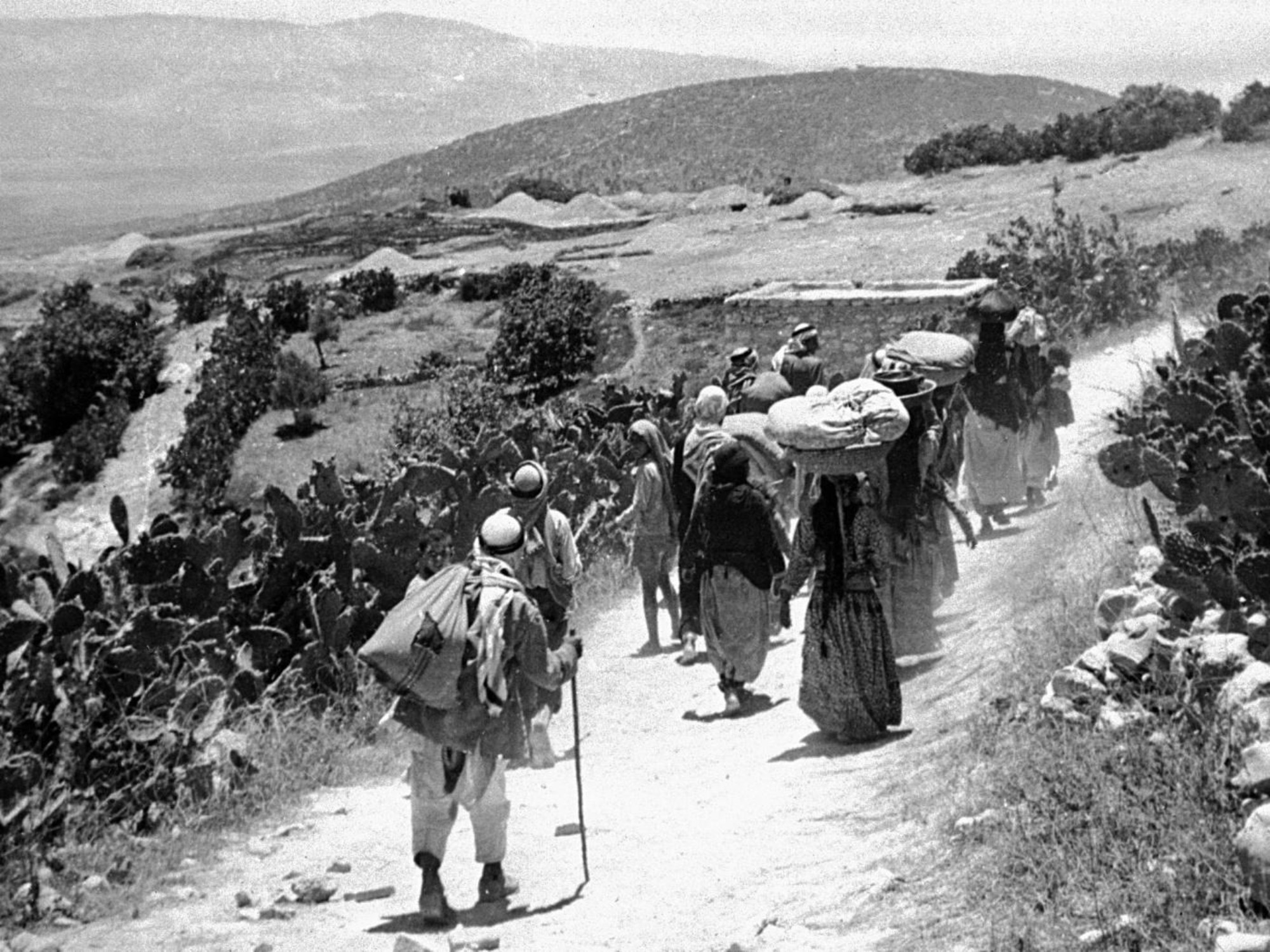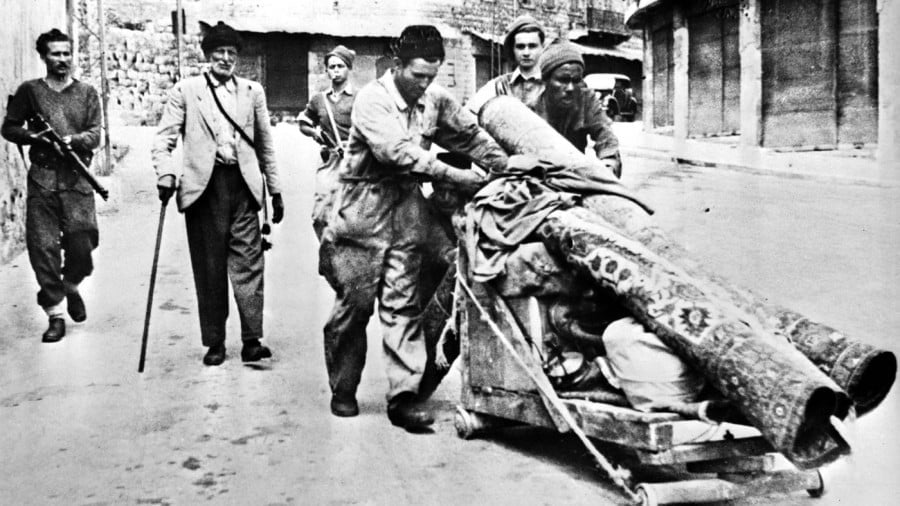From Balfour to the Nakba: The Settler-Colonial Experience of Palestine
The late prominent scholar of settler-colonialism, Patrick Wolfe, reminded us repeatedly that it is not an event, it is a structure. While settler-colonialism in many cases has a historical starting point, its original motivation guides its maintenance in the present.
By and large, settler-colonial projects are motivated by what Wolfe defined as “the logic of the elimination of the native”. Settlers’ wish to create a new homeland almost inevitably clashes with the aspirations of the local native population. In some cases, this clash leads to the physical elimination of native populations, as seen in the Americas and Australia; in others, such as South Africa, settlers enclave the indigenous population in closed areas and impose an apartheid system.
Connections between the British empire, Zionism and other settler-colonial projects became even clearer in the years that followed the Balfour Declaration
Zionism in Palestine is a settler-colonial project, and Israel remains to this day a settler-colonial state. This depiction is now widely accepted in the scholarly world, but rejected by mainstream Israeli scholars.
On 2 November 1917, Arthur Balfour, then British foreign secretary, endorsed the idea of a “national home for the Jewish people” without “prejudice” against the “civil and religious rights” of the “non-Jewish communities in Palestine”. While this might imply that Jews were the native and majority population of Palestine, in reality, they comprised 10 percent of the population.
This misrepresentation of the Palestinian reality in the Balfour Declaration shows how applicable the settler-colonial paradigm is to the case of the Zionist movement in Palestine. The settler movement obtained the support of a colonial and imperial power, one that it would disown from 1942 onwards, and shared the perception of the local population as – at best – a tolerated minority, and at worst as usurpers. Britain granted international legitimacy to this act of colonisation, sowing the seeds for the future dispossession of the native population.
Many historians explain the Balfour Declaration in terms of British strategic thinking. It was part of an attempt to prevent a Muslim holy land, and an apprehension that other European powers might support the Zionists.
British support for creating a Jewish homeland in Palestine had its roots in evangelical Christian Zionist dogma, already mushrooming on both sides of the Atlantic by the early 19th century. Long before the Balfour Declaration, Christian settler-colonialism penetrated North America and Africa.
Defenceless and leaderless
The British branch of Christian Zionism focused more closely on the religious significance of a Jewish “return” to Palestine – a precursor for the Second Coming of the Messiah. This millenarian ideology influenced key British politicians at the time of the Balfour Declaration, including then-Prime Minister David Lloyd George.
Connections between the British empire, Zionism and other settler-colonial projects became even clearer in the years that followed the Balfour Declaration. It became a crucial factor in the history of the country when it was integrated into the mandatory charter the League of Nations granted Britain over Palestine.

Its importance was enhanced by the appointment of Herbert Samuel, a pro-Zionist Anglo Jew, as the first high commissioner of Palestine. Immediately upon his arrival to Palestine in 1920, Samuel put in place policies that allowed the settler-colonial movement to bring in more settlers and expand its foothold in the country by purchasing land, mainly from absentee landlords.
The Palestinian national movement was organised enough to resist by popular and violent means. In the early years, the vulnerable Jewish colony was protected by the British, who were particularly important during the 1936-39 Palestinian revolt, brutally crushed with all the might the British empire could muster. This resulted in the destruction of the Palestinian military and political elite, with many killed, wounded or expelled – leaving Palestinian society defenceless and leaderless when it was needed most in 1948.
Western hypocrisy
There is a direct line connecting the vague British promise given to the Zionist movement a century ago and the catastrophe that befell the Palestinian people in 1948. A few British policymakers must have developed second thoughts about the declaration’s validity. In 1930, they pondered the repudiation of the Balfour Declaration, but retreated quickly from such a dramatic U-turn.
In 1939, British policymakers tried to restrict Jewish immigration to Palestine and the purchase of land, but they were later castigated for this policy due to the rise of Nazism and fascism, which turned Palestine into one of the few safe havens for Jews escaping from Europe. The condemnation came from a hypocritical western world that did very little to save the Jews during the Holocaust, or to open its gates to survivors immediately after the war.
The British had to accept an international verdict that European Jews should be compensated by allowing the Zionist movement to further colonise Palestine. They also became the enemies of the Zionist movement. These pressures, together with the transformation of Britain from a world power to a second-grade actor on the international scene, led to its decision in February 1947 to refer the question of Palestine to the United Nations.
Britain was still responsible for law and order between February 1947 and May 1948, and within this responsibility it witnessed, remained indifferent towards and at times acted as an accomplice to the final and disastrous outcome of the Balfour Declaration: the 1948 ethnic cleansing of the Palestinian people.
Blueprint for ethnic cleansing
The British decision prompted the military and political leadership of the Jewish community to devise its own version of “the logic of the elimination of the native”. In March 1948, this leadership produced Plan Dalet, which I believe was a clear blueprint for the systematic removal of Palestinians from Palestine.
The plan’s significance lay in how it was translated into a set of operative commands despatched to Jewish forces in March, April and May 1948. The essence of these orders was to occupy villages, towns and neighbourhoods, expel their people, and in the case of the villages, detonate houses so as to prevent any return to them.
The settler-colonial project of Zionism is not as successful as the American or Australian ones, and may still have an ending similar to the one in South Africa
The British were already retreating from parts of Palestine when this ethnic cleansing commenced, but they were present in the urban space of Palestine, and it was there that the main ethnic cleansing efforts took place. They watched and mediated, as in the case of Haifa, but did not intervene when the people who began to leave under an agreement were shelled by Jewish forces en route to the harbour.
This was a shameful chapter, as shameful as the declaration itself. When the ethnic cleansing ended, half of Palestine’s population was expelled, half of its villages demolished and most of its towns depopulated. On their ruins, Israel built kibbutzim and planted European pine trees to try and erase the Arab nature of Palestine.
The path forward
Britain recognised quite quickly the Jewish state and contributed further to the Palestinian disaster by supporting the partition of post-mandatory Palestine between Jordan and Israel. Moreover, the British did all they could to prevent the making of a Palestinian state in even part of Palestine. The ruination of Palestine became the inevitable consequence of the Balfour Declaration.
Yet, the settler-colonial project of Zionism is not as successful as the American or Australian ones, and may still have an ending similar to the one in South Africa. It is too early to tell, but through this prism, one can understand better why there is a conflict in Israel and Palestine and what – at least in principle – should be the way forward for solving it.







